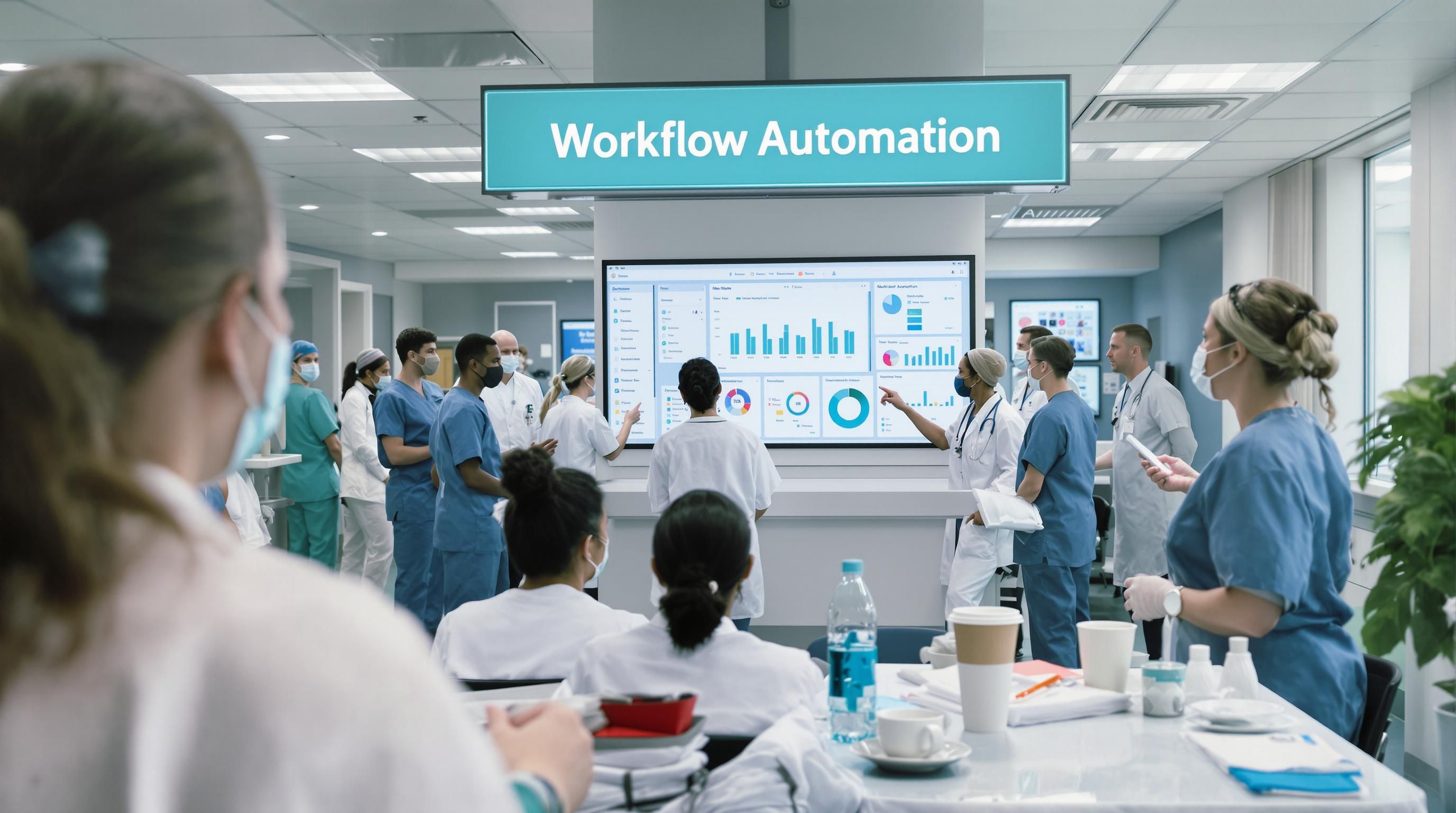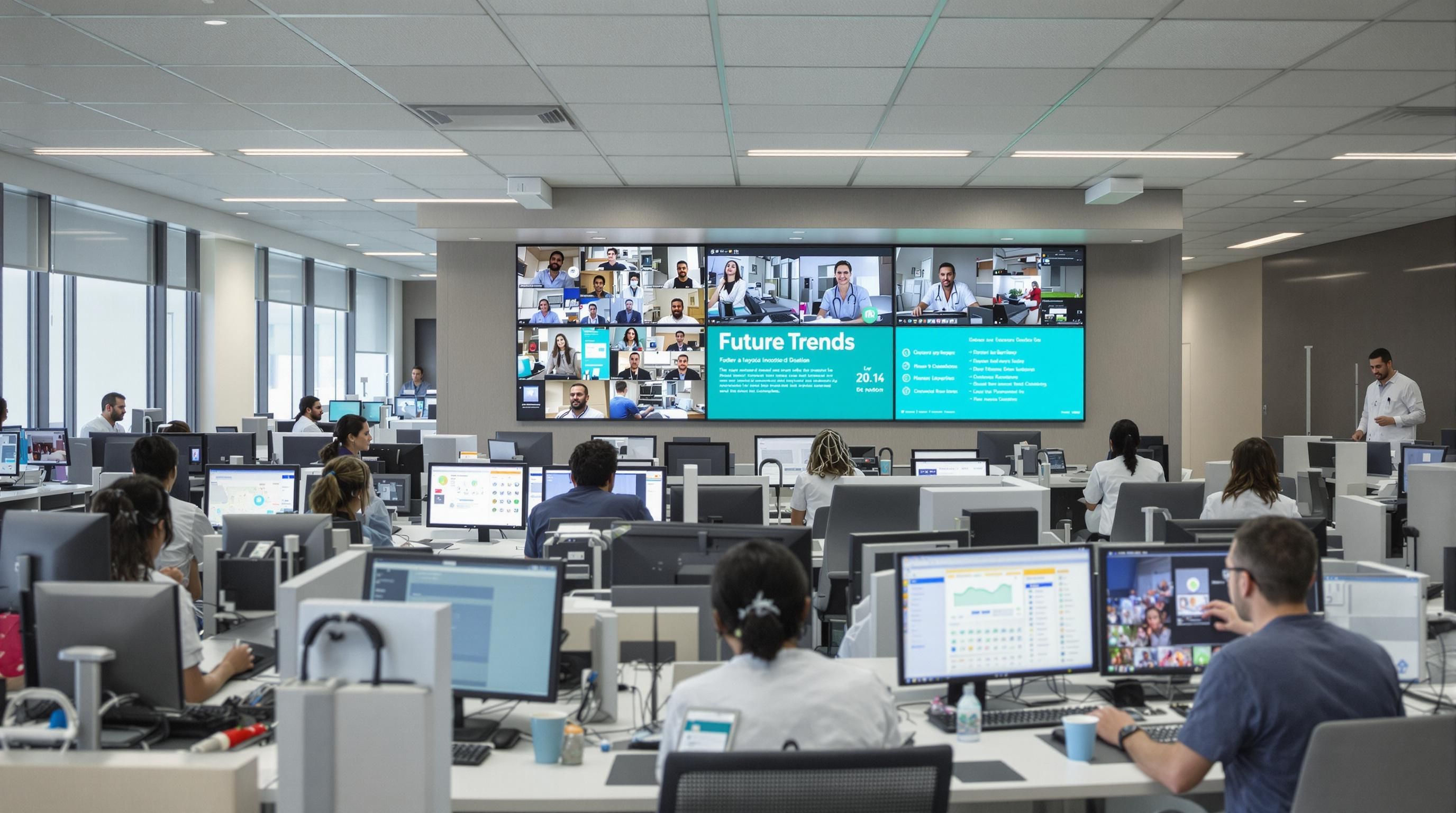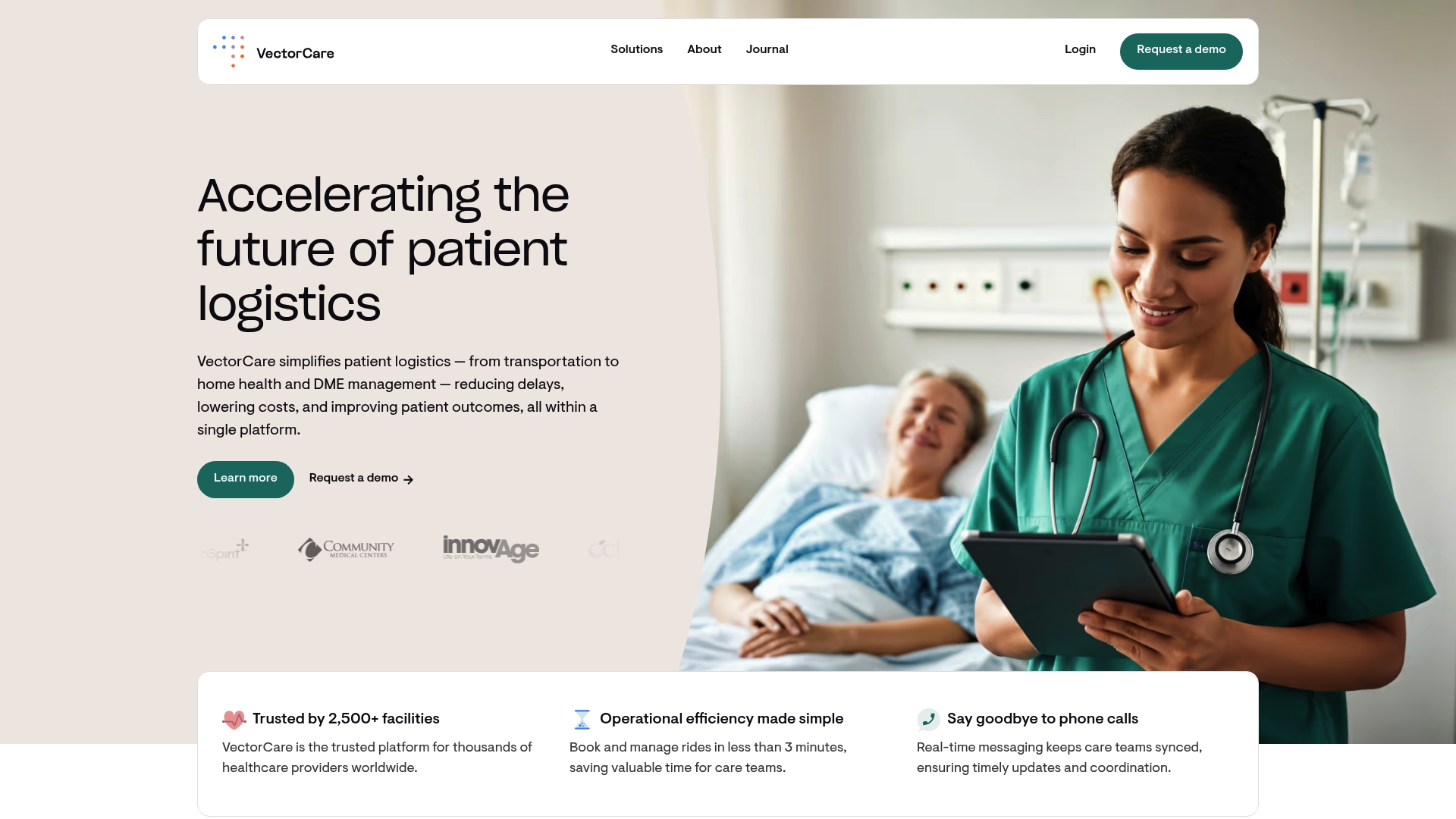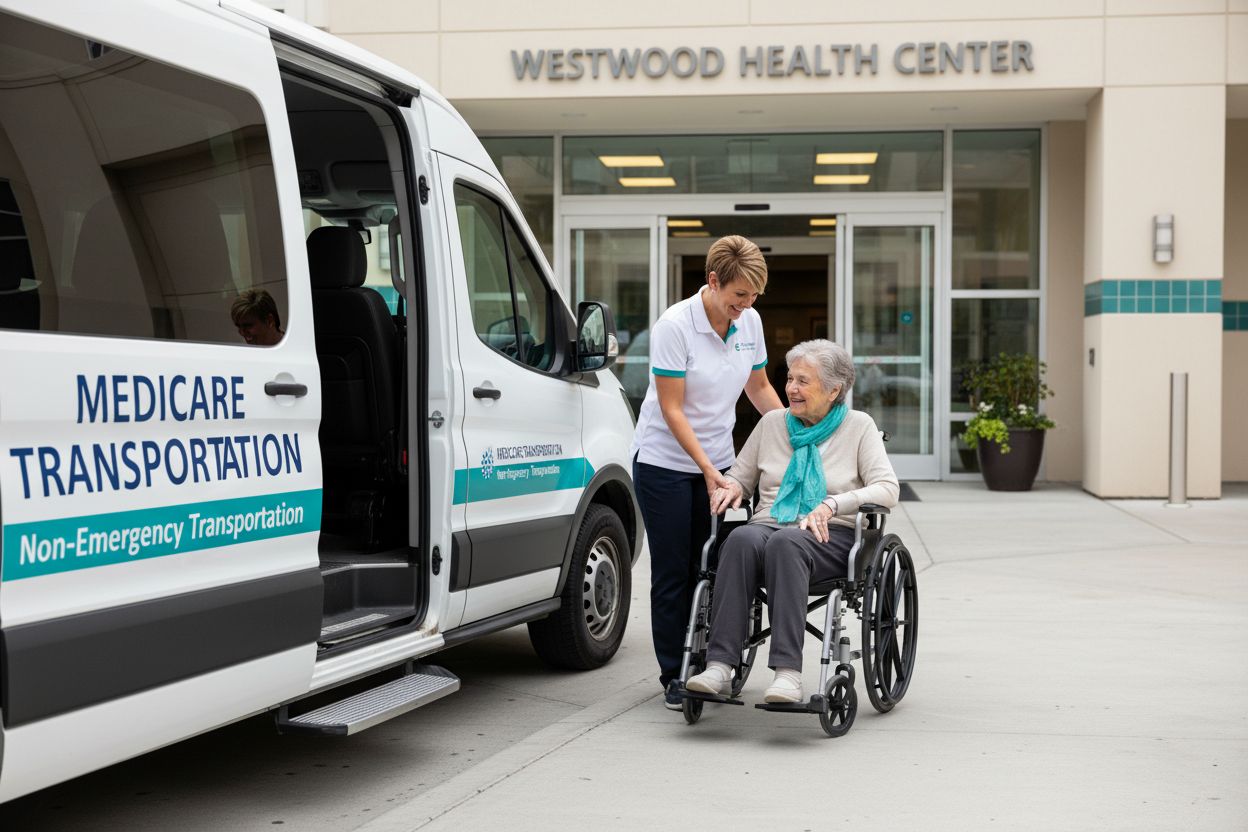Healthcare Workflow Automation Trends and Solutions 2025

Hospitals are under pressure like never before and the scramble to deliver faster care with fewer resources is getting intense. Yet, while many expect automation in healthcare to simply replace paperwork, that barely scratches the surface. The real shock is that over 85 percent of healthcare organizations worldwide plan to invest in generative AI solutions by 2028, and these technologies are not just shaving seconds off admin tasks—they are set to redefine everything from patient intake to clinical decision-making.
Table of Contents
- Key Benefits Of Healthcare Workflow Automation
- Top Workflows To Automate In 2025
- Best Practices For Successful Implementation
- Future Trends Impacting Healthcare Automation
Quick Summary
| Takeaway | Explanation |
|---|---|
| Automate Routine Tasks for Efficiency | Implement workflow automation to reduce manual, repetitive tasks, allowing healthcare providers to focus more on patient care. |
| Integrate Real-Time Patient Data | Utilize automated systems to access and integrate up-to-date patient information, enhancing decision-making and coordination among care teams. |
| Focus on Patient-Centered Automation | Design automation strategies that improve patient experience by reducing wait times and streamlining communication processes. |
| Prioritize Strategic Process Selection | Assess and select the most suitable workflows for automation, taking into consideration frequency and complexity. |
| Emphasize Change Management and Training | Invest in change management strategies to facilitate adaptation to new technologies and ensure stakeholder engagement throughout implementation. |
Key Benefits of Healthcare Workflow Automation
Healthcare workflow automation represents a transformative approach to addressing complex operational challenges within medical systems. By leveraging advanced technological solutions, healthcare organizations can dramatically improve efficiency, reduce administrative burdens, and enhance patient care delivery.
Optimizing Clinical Resource Allocation
Healthcare workflow automation fundamentally transforms how medical professionals manage time-consuming administrative tasks. According to HIPAA Journal, automation streamlines labor-intensive processes, allowing clinicians to redirect significant time previously spent on paperwork toward direct patient care. This shift enables healthcare providers to increase patient throughput, reduce hospital stay durations, and ultimately improve overall patient outcomes.
By automating routine documentation, scheduling, and communication processes, medical teams can focus on what matters most: providing high-quality patient care. The technology eliminates manual data entry, reduces human error, and creates a more efficient operational environment. Dialog Health reports that automation can lead to substantial cost savings by minimizing administrative errors and streamlining billing processes.
Enhanced Decision Making and Information Management
Automated systems provide healthcare professionals with real-time, accurate patient information, enabling faster and more informed clinical decisions. These systems integrate data from multiple sources, creating comprehensive patient profiles that support more precise medical interventions. The ability to access up-to-date information instantly transforms how medical teams coordinate care and respond to patient needs.
Moreover, automated workflow solutions create unprecedented transparency in patient logistics. Read more about how VectorCare solves communication gaps in healthcare communication, enabling seamless information exchange across different departments and healthcare providers.
Improving Patient Experience and Operational Efficiency
Healthcare workflow automation directly impacts patient experience by reducing wait times, minimizing administrative friction, and creating more personalized care pathways. Automated systems can quickly schedule appointments, manage patient records, and coordinate complex care logistics with unprecedented precision.
The technology goes beyond mere operational efficiency. It represents a fundamental reimagining of healthcare delivery, where technology serves as an enabler of more human-centered, responsive medical services. By reducing administrative overhead, healthcare professionals can dedicate more time and energy to meaningful patient interactions, ultimately improving both clinical outcomes and patient satisfaction.
As healthcare continues to evolve, workflow automation will become increasingly critical. Organizations that embrace these technological solutions will be better positioned to meet growing patient demands, manage increasing complexity, and deliver high-quality, efficient healthcare services.

To help clarify the distinct advantages discussed in this section, the following table summarizes the key benefits of healthcare workflow automation and their primary impacts.
| Benefit | Primary Impact |
|---|---|
| Optimizing Clinical Resource Allocation | Frees clinicians’ time for patient care, increases throughput |
| Enhanced Decision Making & Information Mgmt | Integrates real-time data for informed, coordinated decisions |
| Improving Patient Experience & Efficiency | Reduces wait times, streamlines processes, personalizes care |
| Reducing Human Error & Admin Overhead | Minimizes manual entry mistakes, cuts administrative costs |
| Cost Savings | Streamlines billing and insurance, reduces unnecessary expenses |
Top Workflows to Automate in 2025
As healthcare technology continues to advance, identifying and automating critical workflows becomes increasingly essential for improving operational efficiency and patient care. In 2025, healthcare organizations will focus on strategic automation initiatives that transform complex administrative and clinical processes.
Patient Intake and Onboarding Processes
Streamlining patient intake represents a critical area for workflow automation. According to Pipedrive, healthcare organizations can significantly enhance patient experience by automating initial registration, documentation, and preliminary screening processes. Automated intake systems can rapidly collect patient information, verify insurance details, and prepare comprehensive patient profiles before clinical interactions.
These automated workflows reduce administrative burden, minimize errors in patient data collection, and create a more seamless initial patient engagement. By implementing intelligent intake systems, healthcare providers can reduce wait times, improve data accuracy, and allocate staff resources more effectively.
Remote Patient Monitoring and Compliance Management
Advanced automation technologies are revolutionizing remote patient monitoring and healthcare compliance. Comprehensive research from ArXiv highlights the potential of AI-driven systems in detecting early health indicators and providing personalized patient monitoring. These automated workflows enable continuous health tracking, predictive diagnostics, and proactive intervention strategies.
Compliance management emerges as another critical workflow for automation. CMW Lab research demonstrates how machine learning algorithms can dramatically reduce human error in regulatory documentation, insurance verification, and patient record management. Learn more about VectorCare’s approach to agnostic software solutions that enhance operational flexibility and compliance efficiency.
Clinical Documentation and Communication Workflows
Clinical documentation represents a complex workflow ripe for automation in 2025. Intelligent systems can now automatically transcribe physician notes, generate preliminary reports, and integrate information across different medical platforms. These automated workflows reduce the time healthcare professionals spend on administrative tasks, allowing them to focus more on direct patient care.
Communication workflows will also see significant automation. Automated appointment scheduling, patient follow-up systems, and interdepartmental communication platforms will become standard. These technologies ensure seamless information exchange, reduce communication gaps, and create more responsive healthcare ecosystems.
As healthcare continues to evolve, the organizations that successfully implement these automated workflows will gain substantial competitive advantages. By embracing technological solutions that reduce administrative complexity, healthcare providers can create more efficient, accurate, and patient-centered care environments. The future of healthcare lies not just in medical innovation, but in the intelligent automation of complex operational processes.
To offer a side-by-side view of top areas ripe for automation, the table below compares major 2025 healthcare workflows and the key automation benefits for each.
| Workflow Area | Automation Focus | Key Benefits |
|---|---|---|
| Patient Intake & Onboarding | Registration, documentation, pre-screening | Reduces wait times, data errors, staff workload |
| Remote Patient Monitoring & Compliance | Continuous health tracking, compliance docs | Early detection, proactive care, error reduction |
| Clinical Documentation & Communication | Note transcription, scheduling, reporting | More time for care, seamless communication |
Best Practices for Successful Implementation
Successful healthcare workflow automation requires a strategic and comprehensive approach that goes beyond simply implementing new technologies. Healthcare organizations must carefully navigate complex technological, organizational, and human factors to ensure meaningful and sustainable digital transformation.
Strategic Process Selection and Assessment
Selecting the right workflows for automation is crucial. According to NCBI research, organizations should meticulously evaluate potential automation candidates by considering multiple critical factors. These include task frequency, complexity of existing processes, clarity of current roles, and the inherently manual nature of specific workflows.
Healthcare leaders must conduct thorough assessments that analyze current operational inefficiencies, potential return on investment, and alignment with broader organizational goals. This systematic approach ensures that automation efforts target areas with the most significant potential for improvement, rather than implementing technology for technology’s sake.
Ensuring Technological Reliability and Ethical Implementation
The FUTURE-AI international consensus guideline provides a comprehensive framework for developing trustworthy healthcare automation solutions. This guidance emphasizes the critical importance of creating AI-driven tools that are not only technologically advanced but also transparent, reliable, and aligned with clinical needs.
Key considerations include maintaining data privacy, ensuring algorithmic fairness, and creating systems that can be easily understood and trusted by healthcare professionals. Explore our approach to patient-centric tools that prioritize both technological innovation and ethical implementation.
Change Management and Stakeholder Engagement
Successful implementation extends far beyond technological deployment. Healthcare organizations must invest heavily in comprehensive change management strategies that address potential resistance, provide extensive training, and create a culture of continuous learning and adaptation.
This involves multiple strategic approaches:
- Developing clear communication plans that explain the benefits of workflow automation
- Creating robust training programs that help staff understand and embrace new technologies
- Establishing feedback mechanisms that allow continuous improvement and refinement of automated systems
- Ensuring leadership support and active involvement throughout the implementation process
Healthcare leaders must recognize that technological transformation is fundamentally a human process. By prioritizing stakeholder engagement, providing adequate support, and maintaining transparency, organizations can create an environment where automation is viewed as an enabler rather than a threat.
As healthcare continues to evolve, successful workflow automation will distinguish innovative organizations from their competitors. The key lies not in the technology itself, but in the thoughtful, strategic, and human-centered approach to its implementation. Organizations that master this delicate balance will be best positioned to deliver more efficient, accurate, and compassionate healthcare services.
Future Trends Impacting Healthcare Automation
Healthcare automation is rapidly evolving, driven by technological advancements and critical industry challenges. As healthcare systems face unprecedented pressures, emerging trends are reshaping how medical organizations approach workflow optimization and technological integration.
Robotics and AI-Driven Operational Support
Robotics are emerging as a transformative solution to healthcare workforce challenges. According to Financial Times reporting, hospitals are increasingly adopting robotic systems to support critical operational tasks. These technologies are not replacing human workers but augmenting their capabilities by handling routine activities like medication delivery, supply retrieval, and environmental management.
By 2028, the healthcare industry may face up to 100,000 critical workforce vacancies, making automation technologies increasingly crucial. Robotic solutions from companies like Diligent Robotics are already operational in 30 hospitals, demonstrating the practical potential of these technologies to address staffing constraints while maintaining high-quality patient care.
Generative AI and Clinical Workflow Enhancement
Generative AI represents a revolutionary approach to healthcare workflow automation. The Philips Future Health Index report reveals that 92% of healthcare leaders consider automation critical for addressing staff shortages. An impressive 85% of healthcare organizations worldwide are investing or planning to invest in generative AI technologies within the next three years.
These advanced AI systems can function as virtual assistants, dramatically reducing administrative burdens. They can organize clinical notes, simplify patient information communication, and provide rapid insights into complex medical histories. Explore VectorCare’s insights on emerging healthcare trends to understand how these technologies are transforming patient care delivery.
Technological Synergies and Collaborative Innovation
The future of healthcare automation lies in collaborative technological ecosystems. According to Wolters Kluwer’s healthcare technology predictions, 2025 will see increased partnerships between AI and complementary technologies. These synergies aim to create comprehensive solutions that address clinician burnout, improve workflow efficiency, and deliver tangible value to health systems.
Advanced technologies like ambient listening scribes are emerging as powerful tools to reduce administrative workloads. By integrating multiple technological solutions, healthcare organizations can create more responsive, efficient, and supportive work environments that prioritize both patient care and healthcare professional well-being.
As we move forward, healthcare automation will continue to evolve from a supplementary technology to a fundamental component of modern medical infrastructure. The most successful organizations will be those that view these technologies not as replacements for human expertise, but as powerful tools that enhance human capabilities, reduce administrative burdens, and ultimately improve patient care quality and accessibility.

Frequently Asked Questions
What is healthcare workflow automation?
Healthcare workflow automation refers to the use of technology to streamline and automate various administrative and clinical processes in healthcare organizations, improving efficiency and reducing manual tasks.
How will automation improve patient care in 2025?
Automation will enhance patient care by reducing wait times, simplifying patient intake processes, and enabling healthcare providers to focus more on direct patient interactions, ultimately leading to better patient outcomes.
What are some key areas to automate in healthcare by 2025?
Key areas to automate include patient intake and onboarding, remote patient monitoring, and clinical documentation, which can significantly improve operational efficiency and patient experiences.
How can healthcare organizations ensure successful automation implementation?
To ensure successful automation, organizations should strategically select workflows for automation, prioritize change management and stakeholder engagement, and ensure the technology used is reliable and ethically implemented.
Unlock Seamless Healthcare Workflow Automation with VectorCare
Healthcare teams today are faced with overwhelming administrative tasks, frequent communication gaps, and growing pressure to deliver better outcomes with fewer resources. As described in this article, inefficient patient logistics and slow information flow directly impact care quality, increase costs, and burden staff. If your goal is to optimize resource allocation, support real-time patient data sharing, and enhance decision-making, you need a modern, automated solution designed for these exact challenges.

Now is the time to bridge the gap between clinical needs and operational efficiency. Discover how VectorCare’s digital platform streamlines patient logistics, supports secure communication, and automates key workflows needed for 2025 and beyond. Visit VectorCare today to explore how integrated automation, AI-powered dispatching, and no-code workflow tools can help your organization reduce delays, lower costs, and deliver a better patient experience. Take the next step toward true coordinated care and see the impact for yourself.
Recommended
- 2020 Healthcare Recap & Upcoming Care Trends – VectorCare
- Becker’s Healthcare Report: How VectorCare Solves Communication Gaps in Patient Transfers – VectorCare
- How Technology Can Empower Healthcare Professionals – VectorCare
- Patient Flow Barriers: Impact to Hospital Efficiency and Patient Outcomes – VectorCare



